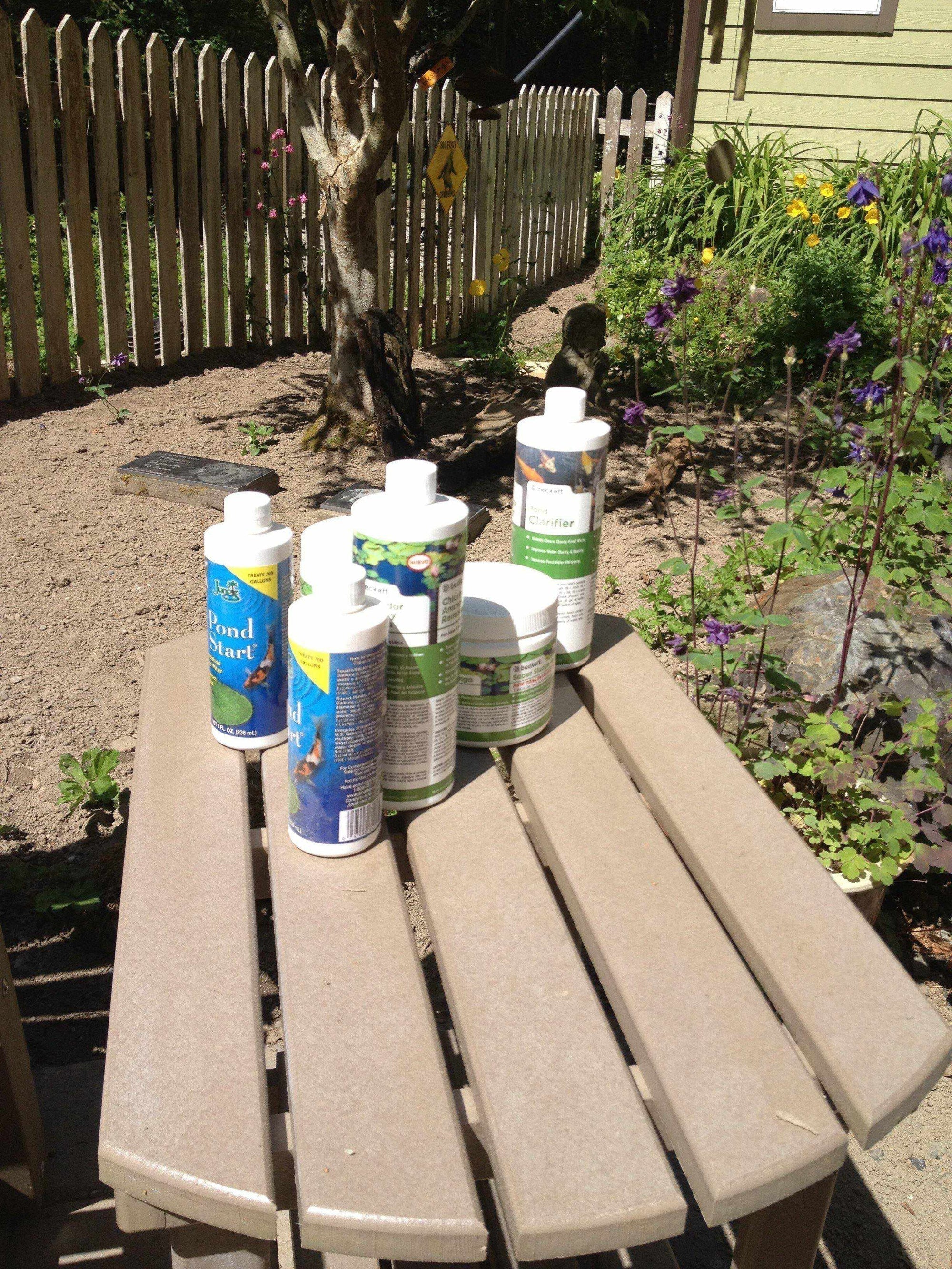An extremely important part of the pond chemistry comes from the bacteria and plants that live in the water. Beneficial colonies of nitrifying bacteria need to thrive in the pond and filters in order to keep the water fresh, clean and healthy. These bacteria strip or combine components from chemical compounds.
Nitrogen Cycle: The nitrogen cycle in a pond is responsible for biological filtration to keep the water at safe levels to support aquatic life including fish and plants. Without an established ecosystem, high levels of ammonia and nitrites can put fish into danger. Once a pond is installed, nitrogen from the atmosphere enters the pond through rainfall, wind and runoff. Leaves, twigs and other debris may also enter the pond. In mature ponds, fish waste and uneaten fish food will also add to the debris and it will start to decay over time with the help of beneficial bacteria or microorganisms called nitrosomonas and nitrobacter. As the debris breaks down it releases ammonia (NH3) into the water. Nitrosomonas will reduce the ammonia and oxygen levels in the pond by consuming them and produce nitrites (NO2). Nitrites are also harmful to fish so another organism called nitrobacter will reduce the nitrites in the water and convert them to plant-friendly nitrates (NO3). Nitrates are then consumed by plants and algae or reduced by freshwater changes.
Establishing Colonies: Beyond annual cleaning, after major component replacements which introduces large amounts of sterile materials (e.g. 100% new water, replace the liner or stock tank, replace the biological filter media, remove all the rocks, etc.), much of the existing biosphere will be wiped out. It will take nature time to establish a healthy population of beneficial bacteria: nitrosomonas and nitrobacter. After such work, you may have to wait 4-6 weeks before adding fish as the ammonia and nitrites levels will be high. First thing will be to treat fresh water with the prescribed amount of stress coat to remove chlorine. After a couple of days (and water temps are above 50°) to kick start beneficial microorganisms, seed your filter media with beneficial bacteria and enzymes gel in your bio-filter pads. Add bacteria and enzymes powder in the main pool. Run the waterfall continuously to boost dissolved oxygen levels as well.
Adding Bacteria: In the early spring when water temps are above 50° and ponds are waking up after a long winter, a similar cycling process will take place. Some nitrosomonas and nitrobacter will survive in your filtration media and gravel and begin to colonize, but it's a good idea to give them a boost after cleaning your filters by adding gel and powdered bacteria and enzymes to the bio-filter and water. After major freshwater changes, wait a day or two before adding bacteria to ensure all chlorine has dissipated. Likewise, after large cleaning events or when sterile components are added to the pond, add bacteria.
Plant-Friendly Nitrates: A healthy pond with clean, clear water will promote green algae growing on the liner, rocks and basically most every surface taking advantage of the sunlight all the way to the bottom of the pond. This too is good as long as there is a check and balance. The algae and aquatic plants (such as watercress, water lettuce and water lilies) will intake the nitrates (that the nitrobacter converted from harmful nitrites) and give off oxygen in return. Too much algae is a sign of nutrient-rich water with too much nitrates and phosphorus. This shouldn’t happen with high levels of oxygen in the water while the pump filters the water. Too many nitrates can cause the oxygen levels to drop and harm fish and wildlife. If a test kit shows too much Nitrates, the only other way to reduce it is to change out some of the pond water with freshwater. Begin with a 10%-20% water change and treat for chlorine, then test again. Note: Ensure to remove dead aquatic plant growth as this will decay and add ammonia to the water. Remember, plants not only rid the water of nitrates, but they give off oxygen and help clarify the water.
Previous Article: 19: Pond Water – Ion Chemistry
Next Article: 21: Pond Water Management
Table of Article Contents and Disclaimer

